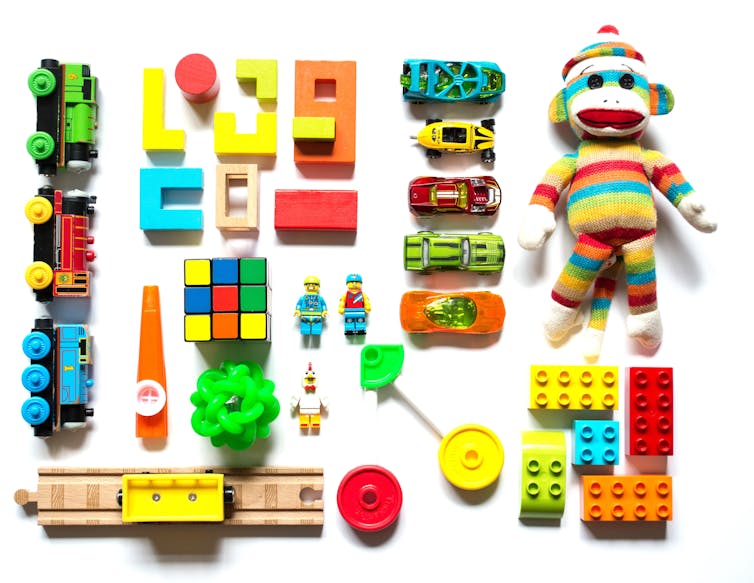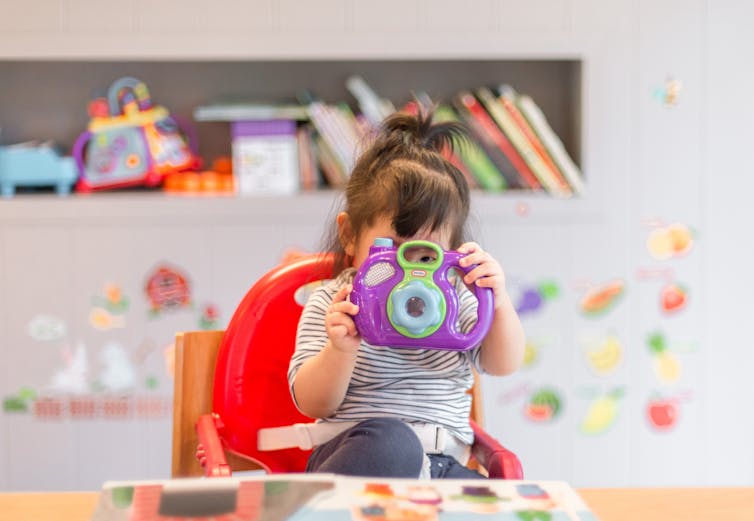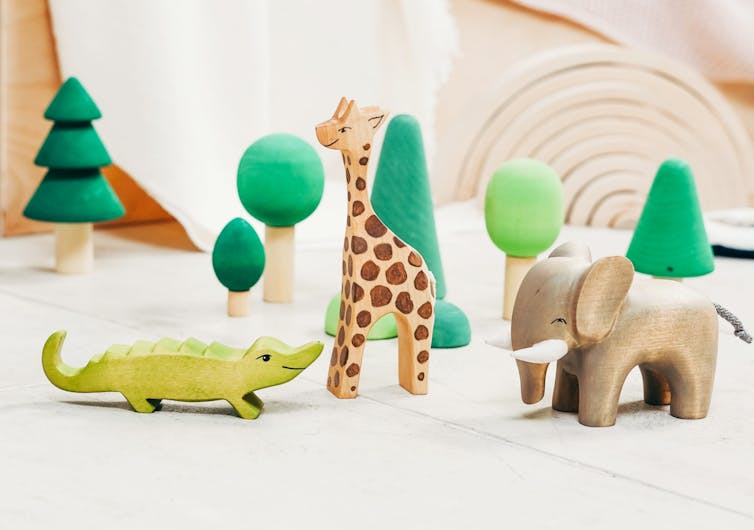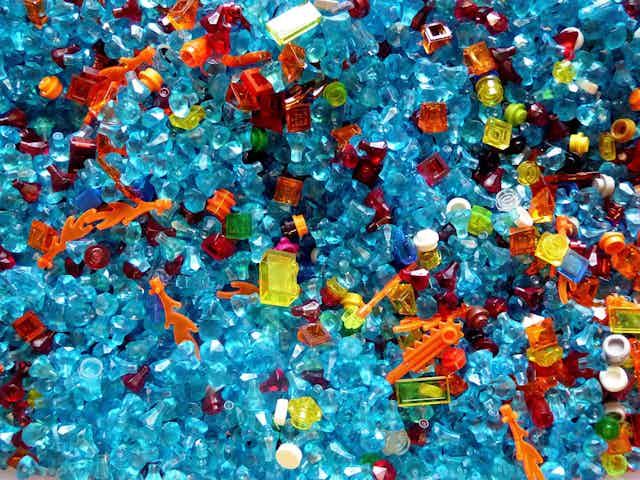As Christmas approaches, many children experience the “gimme-gimmes” and write a list of toys that they hope Santa will bring. This is to be expected. Toys give children a chance to learn and be curious, engage their imaginations in play and become socialised with others.
Unfortunately, 80% of all toys end up in landfills, incinerators or the ocean. The toy industry uses 40 tonnes of plastic for every US$1 million it generates in revenue and has an excessive carbon footprint.
Toys may contribute to the development of a child while threatening their health and wellbeing with pollution. Advertisers perpetuate this paradox, and children are vulnerable to their persuasive tactics.
Advertisers know that children are an inevitable part of the consumer decision-making cycle and coax them to pester their parents to part with hard-earned cash. Creating an emotional attachment to toys in the minds of children is key – tie-ins with food, fun, clothing and music create a spiral of brand-associated desire.
Popular but non-recyclable loom bands (a wrist-worn accessory) are a poignant example. This worldwide children’s craze, often used to signal solidarity with a cause, has led to a deluge of silicone-based rubber reaching landfills and the ocean every year.

Aside from emotional marketing (which works on children and adults alike) studies have shown that very young children often cannot tell whether they are watching a television programme or an advertisement. Banner advertising on game sites present the same issue.
Only from the ages of nine to 11 do children begin to become brand-aware and conscious of the social currency that brand power presents. While they may increasingly understand the intent behind branding, they are also at an age where they are prone to peer pressure and will use what psychologists call their “pester power”.
Children are clearly vulnerable to these tactics, and the result is a growing stream of plastic into the environment. But psychological research suggests that a child’s developmental capacity to understand the climate crisis and its consequences could provide an antidote. By giving children space to participate fully in decisions that are potentially harmful to the environment, parents may counteract a child’s susceptibility to aggressive advertising.
Give children more agency
The Psychological Society of Ireland recently responded to a call for recommendations on improving children’s rights laws from the United Nations. Leading the submission, the team and I addressed the mental health problems caused to children by environmental harm.
Elaine Rogers, Alexis Carey and I published a review paper drawing on psychological research and the UN’s global consultation with 16,000 children. This consultation found that children across a range of ages not only demonstrate their understanding of the threat climate change poses but readily propose solutions.

When the opportunity arises, children and adolescents express empathy and distress at the situation, and may even be predisposed to anxiety. The climate anxiety that children experience may be for themselves and their own family, for future generations, or for the environment and other species. These findings suggest that the capacity for children to understand the climate crisis could counteract their susceptibility to advertising which inflames it.
Drawing on our analysis of how children’s participation can generate solutions to environmental issues, I have put together recommendations which may be helpful to parents and guardians this Christmas season.
Get the whole family involved
Have discussions with your child about how a toy will possibly be good or bad for the environment. For instance, some well-known brands have switched to using plastic made from ethanol extracted from sugar cane.
Look for eco-labels on toys and find out which suppliers stock Green Toy brands. Also ask questions about the educational merit of a toy choice and help your child weigh up the pros and cons. Try balancing these purchases with more commercial ones.

Perhaps find out how your children could become involved in national and international debates on climate change. The UN recently made explicit that there is a legal responsibility on advertisers to ensure that marketing does not mislead children and it has placed a high value on children’s involvement in these matters, producing a child-friendly version (and an accompanying video) of its position on children’s rights and the environment.
Toy banks
Look out for collection points for pre-loved toys. Toy banks can start with family, friends and neighbours. Perhaps canvass local residential committees and local government to start one if there isn’t one near you.
Encourage your children to gather a used-toy selection to send to local charity shops in the run up to Christmas.
Encourage longevity
When toys have a personal story, children are more likely to want to play with them for longer, especially character toys.
For example, a doll and teddy bear “holiday” or “hospital stay” might reignite your child’s interest in a toy when they return.
Safe spaces
Creating safe spaces for discussion at home, at school or in the community will help your children think critically about how product marketing or merchandise could make them complicit in damaging the environment. The discussion should feel safe and non-adversarial.
Remember that children are the gatekeepers of purchasing power, with the ability to persuade parents, caregivers and even Santa to bring them the toys they choose.
Empowering your children to make grown-up decisions about the toys they’d like to have, or to keep, will help reduce the negative impact of advertising on their wellbeing.

Don’t have time to read about climate change as much as you’d like?
Get a weekly roundup in your inbox instead. Every Wednesday, The Conversation’s environment editor writes Imagine, a short email that goes a little deeper into just one climate issue. Join the 30,000+ readers who’ve subscribed so far.

